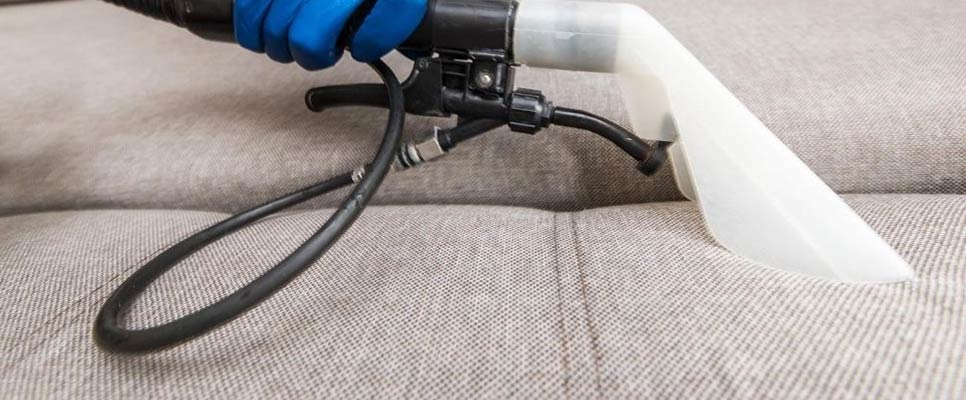Upholstery is a significant investment that adds comfort and style to your home. However, daily use exposes your furniture to spills, stains, and wear. To safeguard your upholstery and keep it looking pristine for years, fabric protector is an invaluable tool. Designed to repel stains and protect fabric, it complements regular upholstery cleaning and extends the life of your furniture. Here’s why using fabric protector is a smart choice for your home.
1. Repels Spills and Stains
One of the primary benefits of fabric protector is its ability to repel liquids and prevent stains. Accidental spills are inevitable, especially in homes with children or pets. Fabric protector creates a barrier on your upholstery, making it harder for liquids to penetrate the fabric.
How It Works:
- Liquids bead up on the surface, allowing you to blot them away before they soak in.
- Prevents common stains from beverages like coffee, wine, and juice.
By repelling spills, fabric protector makes your furniture easier to maintain and reduces the likelihood of permanent stains.
2. Enhances Durability
Daily use can cause fabric fibres to weaken over time. Dirt, debris, and friction can accelerate wear, leaving your upholstery looking dull and worn. Fabric protector shields the fibres, enhancing their durability and helping your furniture stand up to heavy use.
Key Benefits for Durability:
- Protects against abrasion from dirt particles.
- Reduces fading and discolouration caused by UV exposure.
- Maintains the integrity of the fabric for longer.
With fabric protector, your furniture retains its fresh, new appearance even with frequent use.
3. Makes Upholstery Cleaning Easier
Fabric protector doesn’t replace regular cleaning but works hand-in-hand with it. By preventing dirt and stains from embedding deeply into the fabric, it simplifies the cleaning process.
Why Cleaning Is Easier:
- Surface stains are easier to remove.
- Dirt and debris can be vacuumed away without resistance.
- Reduces the need for harsh chemicals or extensive scrubbing.
Combining fabric protector with professional cleaning keeps your furniture looking spotless and fresh for an extended period.
4. Keeps Allergens at Bay
Upholstery can trap allergens like dust mites, pollen, and pet dander, which may affect indoor air quality and trigger allergies. Fabric protector prevents these particles from settling deeply into the fabric, making it easier to remove them during cleaning.
Health Benefits:
- Reduces allergen build-up in your home.
- Promotes a cleaner and healthier living environment.
- Minimises respiratory issues for allergy sufferers.
For families with allergies, combining fabric protector with routine cleaning can significantly improve comfort and air quality.
5. Extends the Lifespan of Your Furniture
Investing in fabric protector is a cost-effective way to extend the life of your upholstery. By protecting against stains, wear, and fading, it ensures your furniture looks great for years, delaying the need for replacements.
Why It Matters:
- Protects your investment in high-quality furniture.
- Saves money on costly repairs or reupholstery.
- Helps maintain the value of your furniture.
Fabric protector acts as a safeguard, keeping your furniture in top condition and preserving its appeal.
6. Ideal for Homes with Pets and Kids
Homes with pets and kids often face more spills, accidents, and messes. Fabric protector is especially beneficial in these settings, offering an extra layer of defence against everyday mishaps.
Pet and Kid-Friendly Benefits:
- Resists pet hair and dander build-up.
- Protects against pet accidents and scratches.
- Prevents stains from food spills, crayons, or markers.
With fabric protector, you can enjoy a cleaner and more manageable living space, even with an active household.
How to Apply Fabric Protector
Fabric protector is typically applied after professional cleaning of upholstery to ensure the fabric is clean and ready to be treated. Here’s how it works:
- The cleaner applies the fabric protector evenly over the upholstery surface.
- The solution bonds with the fabric fibres, creating a protective barrier.
- Once dry, the furniture is ready for use, with enhanced resistance to stains and wear.
Professional application ensures the product is applied correctly and evenly for maximum effectiveness.
When to Reapply Fabric Protector
The effectiveness of fabric protector diminishes over time, especially with frequent use and cleaning. To maintain protection, reapplication is recommended every 12–18 months or after professional upholstery repair and restoration in Melbourne.
Contact Us for Professional Upholstery Cleaning and Fabric Protection
At Karls Couch Cleaning Melbourne, we offer comprehensive cleaning services, including fabric protector application, to keep your furniture looking its best. Our eco-friendly solutions and skilled technicians ensure your upholstery is cleaned and protected effectively.
Contact us today to schedule an appointment and enjoy long-lasting protection for your furniture!
Conclusion
Using fabric protector on your upholstery is a smart way to safeguard your furniture against stains, wear, and allergens. It enhances durability, simplifies cleaning, and extends the lifespan of your investment, all while maintaining a fresh and inviting appearance. When combined with professional upholstery cleaning, fabric protector ensures your furniture remains in top condition for years to come. Protect your upholstery today and enjoy a cleaner, more beautiful home environment.
FAQs About Fabric Protector and Upholstery
Most upholstery fabrics are compatible with fabric protector, but it’s always best to consult a professional to ensure safe application.
While it significantly reduces the likelihood of stains, it may not make your upholstery completely stain-proof. Prompt cleaning is still essential.
Reapply fabric protector every 12–18 months or after professional cleaning to maintain its effectiveness.
DIY products are available, but professional application ensures even coverage and optimal results.
Published on: February 18, 2025






